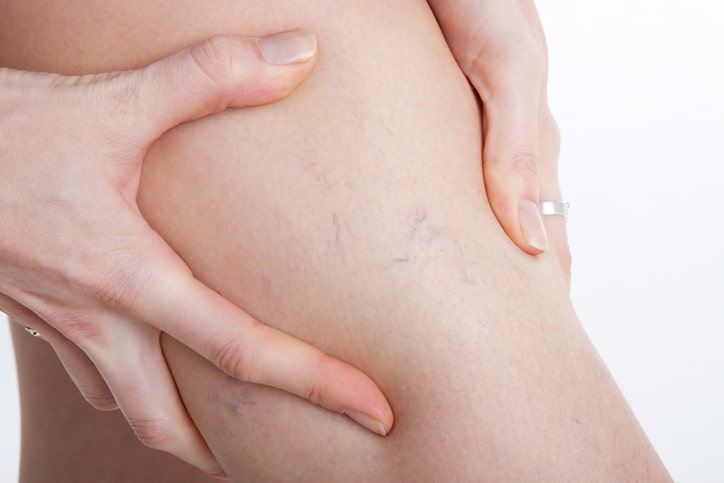What are Leg Veins and Why Do They Appear?
 Have you started noticing veins appear in your legs as you get older? This condition can occur in men and women of any age, but women of childbearing years and older are most likely to be affected. Some estimates suggest that about 40 percent of men and 70 percent of women develop varicose or spider veins by the time they reach age 60. But just because leg veins are common doesn’t mean you want them.
Have you started noticing veins appear in your legs as you get older? This condition can occur in men and women of any age, but women of childbearing years and older are most likely to be affected. Some estimates suggest that about 40 percent of men and 70 percent of women develop varicose or spider veins by the time they reach age 60. But just because leg veins are common doesn’t mean you want them.
What are Leg Veins?
Varicose veins are dilated superficial veins that may appear blue, red, or flesh-colored. They twist and bulge until they develop a rope-like quality running just below the skin’s surface. But varicose veins do more than just affect your appearance. They can also cause painful symptoms, such as heaviness, achiness, swelling, throbbing, and itching. Some varicose veins also increase the risk for complications like blood clots and open sores.
Spider veins are similar, but they don’t bulge the way varicose veins do. Instead, they create a web-like pattern of bluish-red veins spreading across your skin. Spider veins are typically painless and usually don’t increase the risk of health problems.
What Causes Visible Leg Veins?
Varicose veins are the result of damaged valves that prevent blood from pumping effectively against gravity. Weak, leaky valves allow blood to pool in small areas, stressing the vein segments around it. This process spreads until the veins start to twist and bulge into varicose veins.
Some people have a higher risk of developing visible leg veins than others. Age, gender, and genetics play a role, as does lifestyle. For instance, if you sit or stand for long hours, you could have an increased chance of “venous insufficiency.” The pressures on the body caused by pregnancy can also lead to varicose veins.
How to Prevent Visible Leg Veins
You can stop new varicose and spider veins from appearing with these self-care tips:
- Elevate your legs when sitting down.
- Get up and walk around every 30 minutes.
- Take a break from standing every 30 minutes.
- Avoid soaking in hot baths for long periods.
- Wear compression stockings to improve circulation in your legs.
How to Treat Leg Veins
Are you unhappy with the appearance of your leg veins? Then we’ve got good news—dermatologists can fix varicose veins and venous insufficiency with minimally invasive laser leg vein treatment.
Swinyer-Woseth Dermatology uses pulsed dye laser technology to deliver an intense but gentle burst of light aimed at your troublesome veins. The laser destroys damaged vein segments without harming your skin. Small spider veins often disappear immediately, while large varicose veins typically shrink within one to three months. Vascular laser treatment is safe for all skin types and effectively eliminates most visible leg veins.
If you’re interested in reducing the appearance of varicose and spider veins, please call Swinyer-Woseth Dermatology at (801) 682-4715 for more information. Our board-certified dermatologists in Salt Lake City and South Jordan would be happy to answer your questions about vascular laser treatment!
